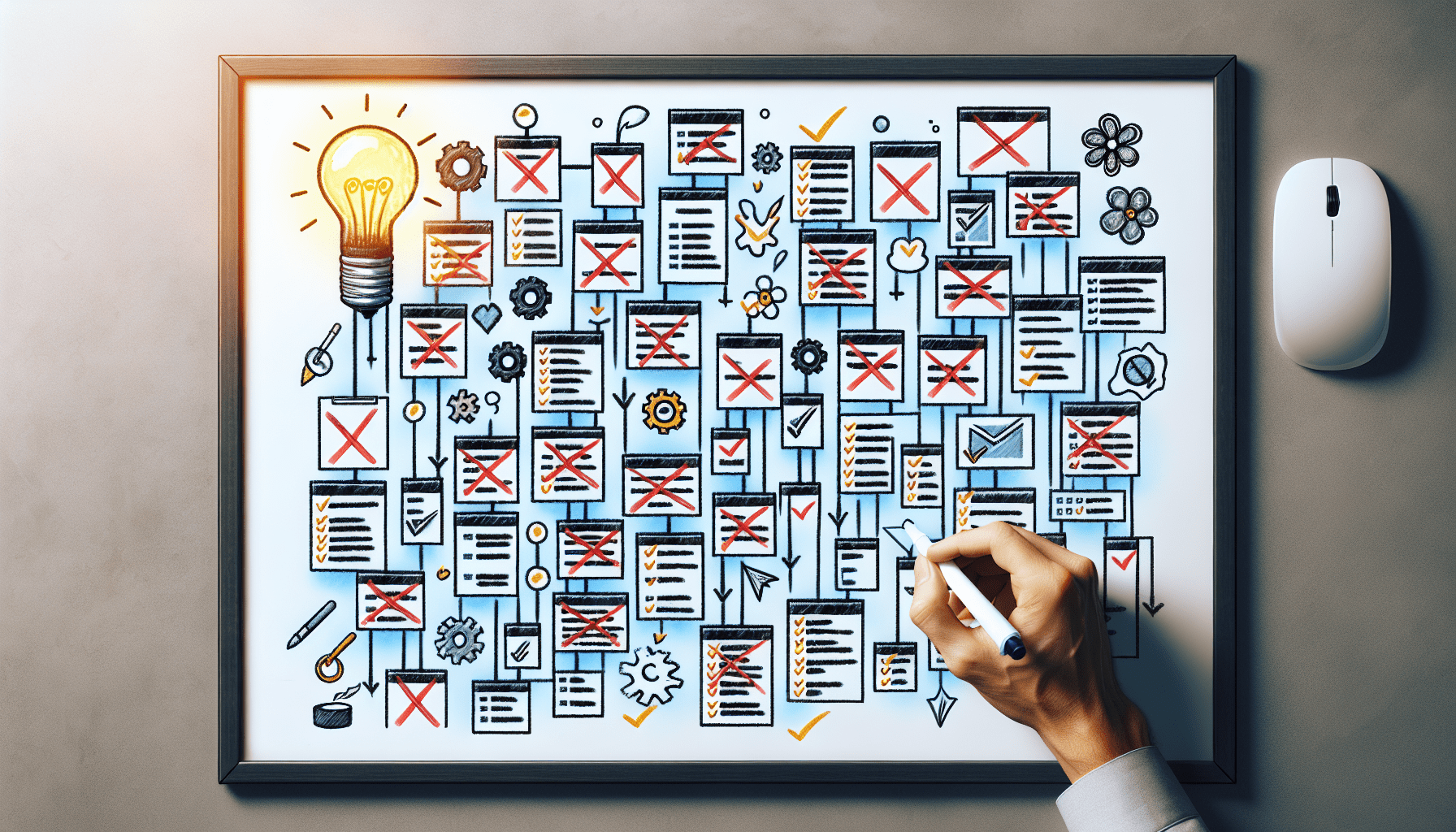
Mindfulness In The Workplace: Techniques For Professionals

In today’s fast-paced and demanding work environment, it’s common to feel overwhelmed and struggle to stay focused on the task at hand. However, incorporating mindfulness techniques into your work routine can be the game-changer you’ve been looking for. Mindfulness in the workplace involves cultivating a sense of awareness and being fully present in the present moment. By utilizing concentration strategies and eliminating distractions, professionals can enhance their productivity and overall well-being. In this article, we’ll explore some effective mindfulness techniques specifically designed for professionals, providing you with the tools you need to thrive in the modern workplace. So, let’s dive in and discover the power of mindfulness in boosting your work performance!

Benefits of Mindfulness in the Workplace
In today’s fast-paced and demanding work environment, incorporating mindfulness practices can greatly benefit individuals and organizations alike. By cultivating a sense of present moment awareness and mental clarity, mindfulness can have a profound impact on various aspects of work life. Here are some key benefits of mindfulness in the workplace:
Improved focus and concentration
One of the primary benefits of mindfulness is its ability to enhance focus and concentration. When you bring your attention to the present moment, you reduce the distractions and mental clutter that often hinder productivity. By training your mind to stay focused on the task at hand, you can improve overall work performance and efficiency.
Reduced stress and anxiety
Workplace stress is a common issue that can negatively affect both the individual and the organization. Mindfulness practices, such as breathing exercises and meditation, have been shown to reduce stress and anxiety levels. By practicing mindfulness regularly, you can develop the skills to manage the pressures of work more effectively and maintain a sense of calm amidst the chaos.
Enhanced creativity and problem-solving skills
Mindfulness can also stimulate creativity and enhance problem-solving skills. By approaching tasks with a clear and open mind, you are able to think more creatively and generate innovative ideas. Additionally, mindfulness helps individuals become more adaptable and flexible in their thinking, allowing them to approach challenges with a fresh perspective.
Improved working relationships
Effective communication and strong relationships are vital for a harmonious and successful workplace. Mindfulness can improve interpersonal interactions by cultivating qualities such as active listening, empathy, and non-judgmental communication. By practicing mindful communication, individuals can build stronger connections, resolve conflicts more effectively, and foster a positive work environment.
Techniques for Practicing Mindfulness
There are various techniques and practices that can help individuals incorporate mindfulness into their work life. Here are some effective techniques for practicing mindfulness in the workplace:
Breathing exercises
Simple yet powerful, breathing exercises are a cornerstone of mindfulness practice. Taking a few moments to focus on your breath can help anchor your attention to the present moment and bring about a sense of calm. Deep diaphragmatic breathing, for example, can reduce stress and increase mindfulness.
Body scan meditation
Body scan meditation involves systematically directing your attention to different parts of your body, noticing sensations without judgment. This practice helps cultivate body awareness and can be done in short breaks during the workday. By checking in with your body, you can release tension and improve overall well-being.
Mindful walking
Rather than rushing from one place to another, you can transform your daily walks into moments of mindfulness. Pay attention to the sensations in your feet as they connect with the ground, the movement of your body, and the environment around you. Walking mindfully can help you slow down, clear your mind, and bring a sense of presence to your actions.
Sensory awareness exercises
Engaging your senses can be a powerful way to anchor yourself in the present moment. Take a few minutes to consciously notice the sights, sounds, smells, and textures around you. By actively engaging with your senses, you can bring yourself back to the present and cultivate a deeper sense of appreciation for your surroundings.

Creating a Mindful Workspace
The environment we work in plays a significant role in our overall well-being and level of mindfulness. By intentionally creating a mindful workspace, we can optimize our surroundings for greater focus and presence. Here are some tips for creating a mindful workspace:
Organize and declutter your workspace
A cluttered and disorganized workspace can create mental clutter and distract from mindfulness. Take the time to declutter your desk, organize your materials, and create a clean and inviting workspace. Removing unnecessary items can help create a sense of calm and provide a clear space for focused work.
Use calming elements and colors
Incorporate calming elements and colors into your workspace to promote a sense of tranquility and relaxation. Consider adding plants, natural materials, or calming artwork to your surroundings. Soft colors like greens, blues, and neutrals can also contribute to a soothing atmosphere. By creating a visually peaceful environment, you can enhance mindfulness and reduce stress.
Incorporate natural light and plants
Natural light and plants have been shown to have a positive impact on well-being and productivity. Whenever possible, position your workspace near a window to benefit from natural light. Additionally, placing indoor plants in your workspace can help improve air quality, reduce stress, and increase feelings of connection with nature.
Limit digital distractions
In a technology-driven world, digital distractions can significantly hinder mindfulness and focus. Take steps to minimize distractions by turning off unnecessary notifications, blocking time-wasting websites, and creating boundaries around technology use. By reducing digital distractions, you can create a workspace that supports greater mindfulness and productivity.
Mindful Communication
Effective communication is essential for cultivating positive working relationships and fostering a harmonious work environment. Mindfulness can enhance communication skills by promoting active listening, empathy, and non-judgmental communication. Here are some key aspects of mindful communication:
Active listening
Active listening involves fully engaging with the speaker, giving them your undivided attention, and striving to understand their perspective without interruption or judgment. By actively listening, you can foster stronger connections, improve understanding, and minimize miscommunication.
Non-judgmental communication
Mindful communication encourages a non-judgmental mindset, where you are open and accepting of different perspectives. Instead of making assumptions or jumping to conclusions, strive to approach conversations with curiosity and a willingness to learn from others. This non-judgmental approach promotes understanding and nurtures a respectful work culture.
Empathy and compassion
Being mindful of others’ emotions and experiences is crucial for effective communication. Cultivating empathy and compassion allows you to connect on a deeper level and respond with kindness and understanding. By considering the feelings and needs of others, you can foster a supportive work environment and build stronger relationships.
Mindful meetings and discussions
Bringing mindfulness into meetings and discussions can greatly improve their effectiveness and efficiency. Start by setting intentions for the meeting, encouraging present moment awareness, and practicing active listening. By creating a mindful space for communication, you can enhance collaboration, creativity, and problem-solving.

Mindfulness in Time Management
Effective time management is essential for productivity, focus, and overall well-being. Mindfulness can support time management by helping individuals prioritize tasks, practice single-tasking, take regular breaks, and set realistic goals and deadlines. Here are some ways to incorporate mindfulness into time management:
Prioritize tasks based on importance and urgency
Mindful time management involves prioritizing tasks based on their importance and urgency. Take a few moments to assess your tasks and determine which ones are most crucial. By prioritizing mindfully, you can focus your time and energy on what truly matters and avoid getting overwhelmed by less important tasks.
Practice single-tasking
Multitasking has become a common approach in the workplace, but research shows that it can be detrimental to productivity and focus. Instead, try practicing single-tasking, which involves giving your full attention to one task at a time. By focusing on one task mindfully, you can complete it more efficiently and with greater quality.
Take regular breaks
Taking regular breaks throughout the workday is essential for maintaining focus and preventing burnout. Use these breaks as opportunities for mindfulness by engaging in short breathing exercises, stretching, or mindful walks. By intentionally stepping away from work, you can recharge your mind and improve overall productivity.
Set realistic goals and deadlines
Mindfulness can help you set realistic goals and deadlines by providing clarity and a realistic assessment of your capabilities. Take time to reflect on your workload, consider your priorities, and set goals that are attainable and meaningful. By setting realistic expectations, you can reduce stress and increase your chances of success.
Mindfulness for Stress Management
Stress is a common occurrence in the workplace, but mindfulness can be a powerful tool for managing and reducing stress. By cultivating self-awareness, developing stress-reducing techniques, practicing self-compassion, and creating a healthy work-life balance, individuals can effectively manage workplace stress. Here are some strategies for incorporating mindfulness into stress management:
Identify and manage stress triggers
Mindfulness involves paying attention to your thoughts, emotions, and physical sensations without judgment. By becoming aware of your stress triggers, you can develop strategies to manage them more effectively. Whether it’s a demanding workload, challenging relationships, or self-imposed pressure, mindfulness can help you identify and navigate these stressors with greater ease.
Practice stress-reducing techniques
Mindfulness practices such as deep breathing, meditation, and progressive muscle relaxation can be powerful tools for reducing stress. These techniques help activate the body’s relaxation response, calming the nervous system and promoting a sense of relaxation and well-being. By incorporating these practices into your routine, you can better manage stress and restore balance.
Cultivate self-compassion
Self-compassion is an essential component of mindfulness and can greatly contribute to stress management. Instead of being overly self-critical or judgmental, make a conscious effort to treat yourself with kindness and understanding. Embrace imperfections, practice self-care, and be gentle with yourself during challenging times. By cultivating self-compassion, you can reduce stress and foster a more supportive internal dialogue.
Create a work-life balance
Achieving a healthy work-life balance is crucial for overall well-being and stress management. Mindfulness can help you establish boundaries between work and personal life, enabling you to fully engage in each domain without feeling overwhelmed. Set aside designated time for relaxation, hobbies, and spending time with loved ones. By creating a balance that honors both your work and personal needs, you can reduce stress and enhance overall satisfaction.
Mindfulness in Decision Making
Effective decision-making is a key skill in the workplace, and mindfulness can enhance this process. By pausing and reflecting before making decisions, considering different perspectives, trusting your intuition, and practicing non-attachment to outcomes, you can make wiser and more thoughtful choices. Here’s how mindfulness can support decision-making:
Pause and reflect before making decisions
Mindfulness encourages individuals to take a moment to pause, reflect, and tune into their inner wisdom before making decisions. By creating space for reflection, you can gain clarity, consider the potential consequences, and make choices aligned with your values and intentions.
Consider different perspectives
Mindfulness involves embracing a non-judgmental mindset and being open to different viewpoints. When making decisions, actively seek out diverse perspectives and consider alternative ideas. By expanding your awareness and considering multiple angles, you can make more informed and inclusive decisions.
Trust your intuition
Intuition can be a valuable guiding force in decision-making. Mindfulness helps individuals cultivate a deep trust in their intuition by quieting the mind, tuning into their instincts, and connecting with their inner wisdom. By honing your intuition through mindfulness, you can make decisions that align with your authentic self and values.
Practice non-attachment to outcomes
Mindfulness encourages individuals to detach themselves from the outcome of their decisions and embrace the present moment. Rather than fixating on specific outcomes, focus on the process and the journey. By practicing non-attachment, you can reduce stress and cultivate a sense of acceptance and peace, regardless of the outcome.
Mindfulness for Emotional Intelligence
Emotional intelligence is a crucial skill for navigating the complexities of the workplace and building strong relationships. Mindfulness can greatly enhance emotional intelligence by promoting awareness and regulation of emotions, developing empathy and understanding, responding rather than reacting, and cultivating gratitude and positivity. Here’s how mindfulness supports emotional intelligence:
Recognize and regulate emotions
Mindfulness fosters emotional intelligence by increasing self-awareness and the ability to recognize and regulate emotions. By observing emotions without judgment, you can develop a greater understanding of your emotional patterns, triggers, and responses. This heightened awareness allows you to respond to emotions in a more skillful and balanced manner.
Develop empathy and understanding
Mindful awareness can extend beyond oneself to others, fostering empathy and understanding. By being fully present and attuned to others, you can develop a deeper sense of connection and compassion. This empathy allows you to respond to others’ emotions with kindness and understanding, strengthening relationships and promoting a positive work environment.
Respond rather than react
Reacting impulsively to emotions can lead to conflict and misunderstandings in the workplace. Mindfulness helps individuals cultivate the ability to pause and respond thoughtfully to emotions rather than reacting impulsively. By taking a moment to assess a situation before responding, you can choose words and actions that align with your values and contribute to positive outcomes.
Cultivate gratitude and positivity
Mindfulness promotes a mindset of gratitude and positivity by encouraging individuals to focus on and appreciate the present moment. Take time each day to reflect on the positive aspects of your work and express gratitude for the people and opportunities around you. By cultivating gratitude and positivity, you can increase overall well-being and foster a more optimistic work environment.
Creating Mindful Teams
Building mindful teams is essential for creating a supportive and thriving work culture. By promoting a supportive and inclusive work culture, encouraging open and honest communication, fostering collaboration and cooperation, and offering mindfulness training to teams, organizations can develop mindful teams that contribute to their overall success. Here are some strategies for creating mindful teams:
Promote a supportive and inclusive work culture
Creating a supportive and inclusive work culture is essential for building mindful teams. Foster an environment where individuals feel safe to express themselves, share ideas, and seek support. Encourage collaboration, respect diversity, and promote an atmosphere of compassion and understanding.
Encourage open and honest communication
Effective communication is the backbone of successful teamwork. Encourage team members to communicate openly and honestly, sharing their thoughts, concerns, and ideas. Create a safe space for dialogue, active listening, and healthy feedback. By fostering open communication, you can build trust and strengthen relationships within the team.
Foster collaboration and cooperation
Mindful teams thrive on collaboration and cooperation. Encourage team members to work together, leverage each other’s strengths, and support one another’s growth. Foster an environment where cooperation is valued above competition, and team success is prioritized over individual achievement.
Offer mindfulness training to teams
Provide opportunities for teams to develop mindfulness skills through training and workshops. Offer resources that introduce mindfulness practices and help team members incorporate them into their work life. By providing mindfulness training, you can equip teams with the tools they need to enhance focus, creativity, and overall well-being.
Sustaining Mindfulness in the Workplace
To make mindfulness a sustainable practice in the workplace, it is essential to create a supportive environment and establish habits that reinforce mindfulness. Here are some strategies for sustaining mindfulness in the workplace:
Create a regular mindfulness practice
Consistency is key when it comes to mindfulness. Establish a regular mindfulness practice that works for you, whether it’s a few minutes of meditation in the morning or a mindful walk during lunch. By committing to a daily practice, you reinforce the habit of mindfulness and make it an integral part of your work life.
Find accountability partners
Accountability partners can provide support and motivation in sustaining mindfulness. Find colleagues who share an interest in mindfulness and agree to hold each other accountable in practicing mindfulness regularly. Check in with each other, share experiences, and offer encouragement along the way.
Join mindfulness groups or communities
There is strength in community, and joining mindfulness groups or communities can provide valuable support. Seek out like-minded individuals or existing mindfulness communities within your organization or online. Engage in discussions, attend workshops or retreats, and share your mindfulness journey with others. By surrounding yourself with a supportive community, you can stay motivated and inspired in your mindfulness practice.
Continuously learn and adapt
Mindfulness is an ongoing journey of self-discovery and growth. Stay open to learning and adapting your mindfulness practice as needed. Explore new techniques, attend seminars or workshops, and read books or articles on mindfulness. By continuously learning and adapting, you can deepen your mindfulness skills and sustain a mindful mindset in the workplace.
Incorporating mindfulness into the workplace can have numerous benefits for individuals and organizations. By practicing mindfulness techniques, creating a mindful workspace, engaging in mindful communication, managing time mindfully, reducing stress, making mindful decisions, developing emotional intelligence, creating mindful teams, and sustaining mindfulness in the workplace, individuals can enhance their overall well-being, productivity, and satisfaction in their professional lives. Start incorporating mindfulness into your work routine today and experience the positive impact it can have on your work and life.



















